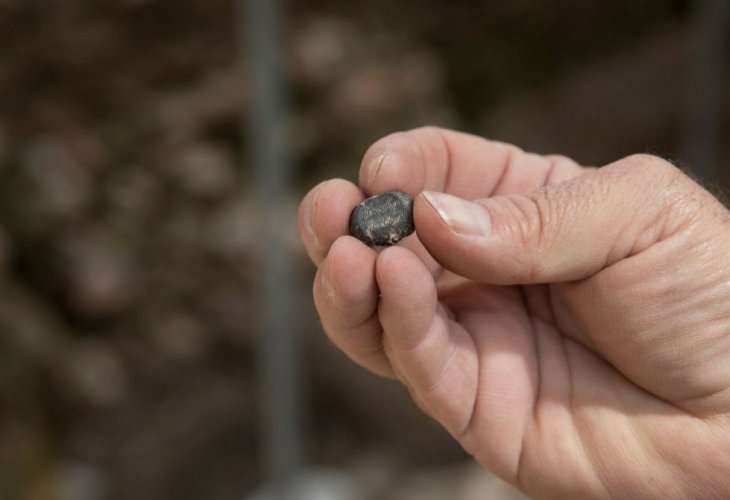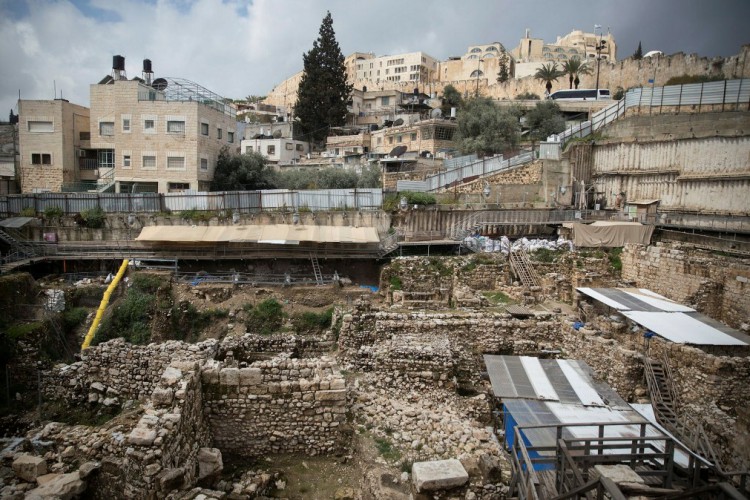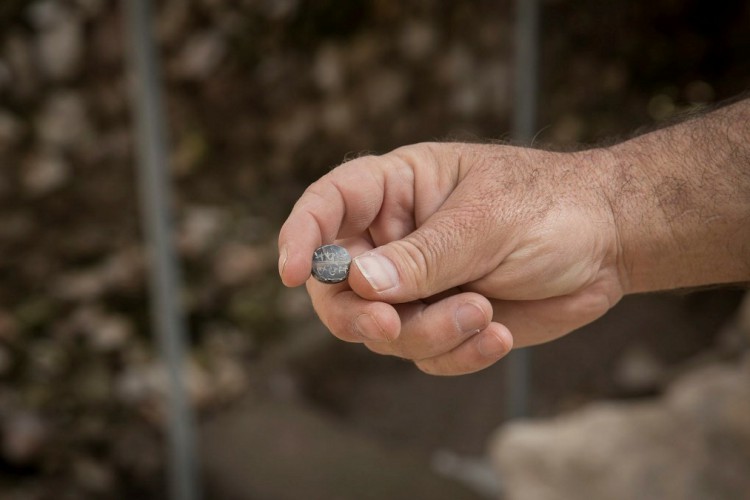Unearthing the Past: Rare Seal from First Temple Era Found in Jerusalem
A seal impression featuring the rare biblical name "Nathan-Melech" has been uncovered in a public structure demolished during the destruction of the First Temple. Another find includes a stone seal also dating back to the end of the Kingdom of Judah.
 Seal impression (bulla) with the name Nathan-Melech (Photo: Hadas Parush, Flash 90)
Seal impression (bulla) with the name Nathan-Melech (Photo: Hadas Parush, Flash 90)A stone seal and a seal impression (bulla), both dating to the end of the Kingdom of Judah, have been discovered during archaeological excavations led by the Israel Antiquities Authority and Tel Aviv University in the Givati Parking Lot in the City of David, within the Walls Around Jerusalem National Park.
According to the excavation directors, Prof. Yuval Gadot of Tel Aviv University and Dr. Yiftah Shalev of the Israel Antiquities Authority, the remarkable finds were located in a large structure thought to be a public building. Within the structure, there were large stone collapses, burnt wooden beams, and numerous pottery vessels. These findings indicate that the building was destroyed by fire in 586 BCE, around the time of the Babylonian conquest of Jerusalem and the destruction of the First Temple by Nebuchadnezzar, King of Babylon.
The building, which may have been the house of one of the significant officials in Jerusalem at the time, is situated on the western slope of the City of David hill. Its importance is suggested by its size, the hewn stones used in its construction, and the quality of the architectural items found in the destruction layer, such as remnants of plaster floors that collapsed from the second floor.
The two unique findings inside the building measure just about one centimeter each. They are inscribed with names in ancient Hebrew script. Dr. Anat Mendel-Geberovich of the Hebrew University of Jerusalem and the Center for the Study of Ancient Jerusalem deciphered the inscriptions, dating them to the mid-7th and early 6th centuries BCE.
Inscribed on the seal impression are the words "Belonging to Nathan-Melech, Servant of the King." The title "Servant of the King" is well-known from the Bible and refers to a high-ranking official close to the king. This title has been found on other seals and impressions before. The uniqueness of this seal impression lies in its being the first archaeological evidence of the name Nathan-Melech outside the Bible. This name appears only once in the Bible—in 2 Kings 23:11—and refers to a court official who participated in the religious reforms enacted by King Josiah of Judah.
Dr. Mendel-Geberovich notes that the fact the official is mentioned solely by his first name, without family attribution, indicates he was a public figure known to all. She emphasizes that while it's not possible to confirm definitively that the discovered seal is indeed that of the Nathan-Melech mentioned in the Bible, there is a strong likelihood. "We are talking about the same period—the bulla and the biblical story," she explains. Additionally, she mentions that the name is rare, and the titles "eunuch" and "Servant of the King" carry a similar meaning of proximity to the king: "This unique conjunction is definitely rare and exciting," she concludes.
 Excavation in the City of David (Photo: Hadas Parush, Flash 90)
Excavation in the City of David (Photo: Hadas Parush, Flash 90)Seal impressions, bullae, were small pieces of clay used to seal letters in ancient times to keep them closed during transit. The massive fire that occurred in Jerusalem during its destruction left no remnants of the letters themselves, but the bullae—made from clay-like material—were better preserved, providing evidence of the letters' existence and insight into their authors.
The second find—a stone seal—made of bluish agate stone, bears the name "Lachar son of Mattanyahu." Dr. Mendel-Geberovich states that "the name Mattanyahu is known from the Bible and other seals and bullae, but this is the first mention of the name 'Lachar,' which was unknown until now." She believes this is not a professional title (farmer) but rather a personal name with an unknown origin. Personal seals were used to sign documents and often set into rings worn by their owners. In ancient times, they signified the identity, lineage, and status of their owner.
 Stone seal with the name Lachar son of Mattanyahu (Photo: Hadas Parush, Flash 90)
Stone seal with the name Lachar son of Mattanyahu (Photo: Hadas Parush, Flash 90)
